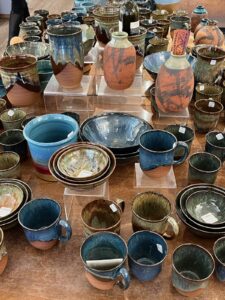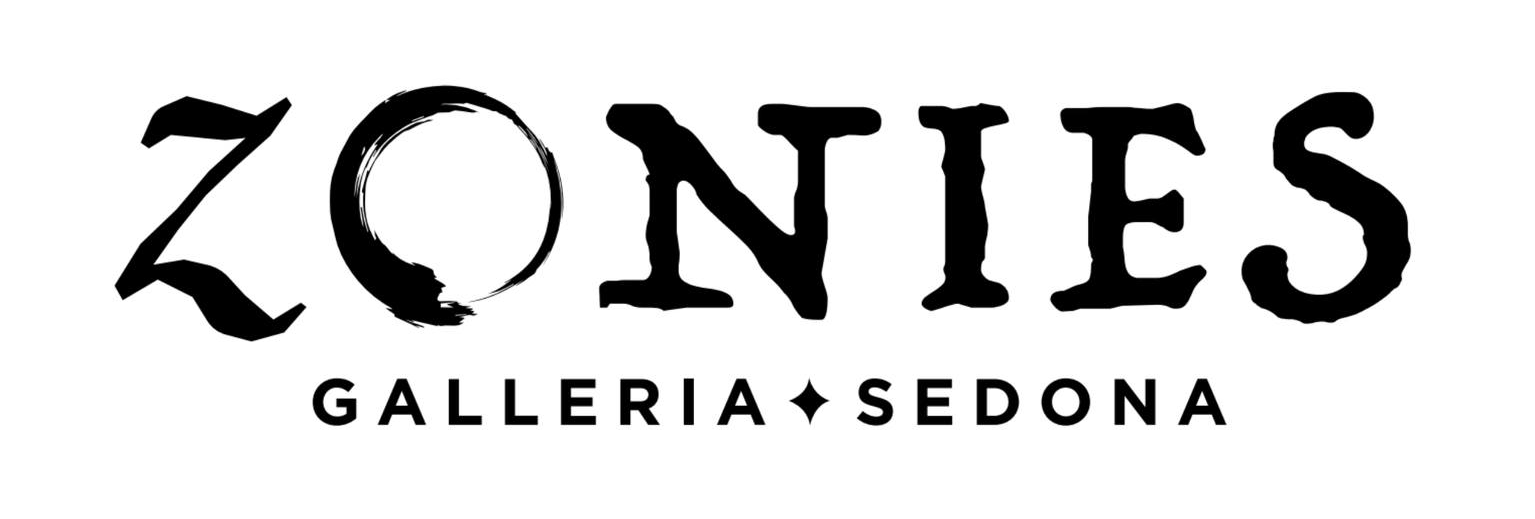
There is nothing more organic than pottery. Made from the five sacred elements – Earth, Wind, Fire, Water and Love…
At Zonies, we have over 25 potters, mostly local, some regional, and national. All very unique and of the highest quality. We select each Potter based on their design, glaze, artistic quality, functionality, and them as people – their love for pottery and what they stand for. We stand behind each carefully selected piece to ensure that they will give our guests years of enjoyment.
Firing Techniques
There are different firing techniques that our artists use, and some use a combination of one or more.
Electric Firing/Oxidation Firing
This is typically done in an electric kiln. Oxygen is free to interact with the glazes and allows very bright, rich colors. High or low temperatures may be used. Some of our artists that use this type of firing technique are:
- Rick Fitch
- Lisa Howe
- Jackie Jackson
- Mike Upp
- Ben Roti
- Sarah Harms
Reduction Firing
This is primarily is done in a gas kiln, since the corrosive effects wear out the elements on and electric kiln. Oxygen is prevented from interacting with glazes during the glaze maturation. This is done by adjusting the amount of gas used in the kiln. This process gives the pottery a mottled, rich, and muted colors. Sometime pottery made in a gas kiln has a speckled look. Gas fired pottery is extremely hardy.Some of our artists that use this type of firing technique are:
- Gary Houston
- Galen – Del Terra
- Tim Hull – American Art Studio
Wood Firing
Wood is used as the burning agent. Kilns or pit firing or large holes are dug in the ground. Wood and pots are placed in together and covered. This type of heat process give the pottery a very organic, primitive/ancient look and feel. Some of our artists that use this type of firing technique are:
Raku Firing
This process takes the pots that have been fired and while still glowing-hot, taken from the kiln they are put into a reduced atmosphere, such as a metal can filled with an agent such as pine needles, newspaper, leaves, etc…. this will bring out intense colors. After cooling, the pottery is either plunged in cold water which can give it a crackling affect or feathers, horse hair, snake skin, etc… is vaporized on to the piece. In Raku, unglazed areas of clay become black due to the carbon from the fire. When the carbon is peeled off the glazed areas, they reveal colors. Some of our artists that use this type of firing technique are:
- Vicente Garcia
- Les Mitchell
Glazes
The glazes used by each potter is their secret sauce. Each artist prides themselves on the variation of color and their color combinations. The glazes start out as powder and are mixed with water and other agents to achieve the desired look. This is done through the artists intentional chemistry. The glazes, once applied look very different, very bland when applied to the clay. It is only when the pottery and glaze is fired together that results in the dramatic colors and brightness.
The Clay
Potters use different types of clay found locally or throughout the country. There are different types of clay and colors of clay. There is also Porcelain clay which is more expensive to use and much more difficult to work with as it is a finer clay. Some of our potters add sand, earth, sediment, silt and water from Sedona so that each piece contains the energy of the land and Oak Creek.
We invite you to visit our gallery to see in person, the different techniques used to create these stunning pieces of functional art. We can also send you pictures or walk you through the gallery on Zoom/Facetime.
 There is nothing more organic than pottery. Made from the five sacred elements – Earth, Wind, Fire, Water and Love…
At Zonies, we have over 25 potters, mostly local, some regional, and national. All very unique and of the highest quality. We select each Potter based on their design, glaze, artistic quality, functionality, and them as people – their love for pottery and what they stand for. We stand behind each carefully selected piece to ensure that they will give our guests years of enjoyment.
There is nothing more organic than pottery. Made from the five sacred elements – Earth, Wind, Fire, Water and Love…
At Zonies, we have over 25 potters, mostly local, some regional, and national. All very unique and of the highest quality. We select each Potter based on their design, glaze, artistic quality, functionality, and them as people – their love for pottery and what they stand for. We stand behind each carefully selected piece to ensure that they will give our guests years of enjoyment.
